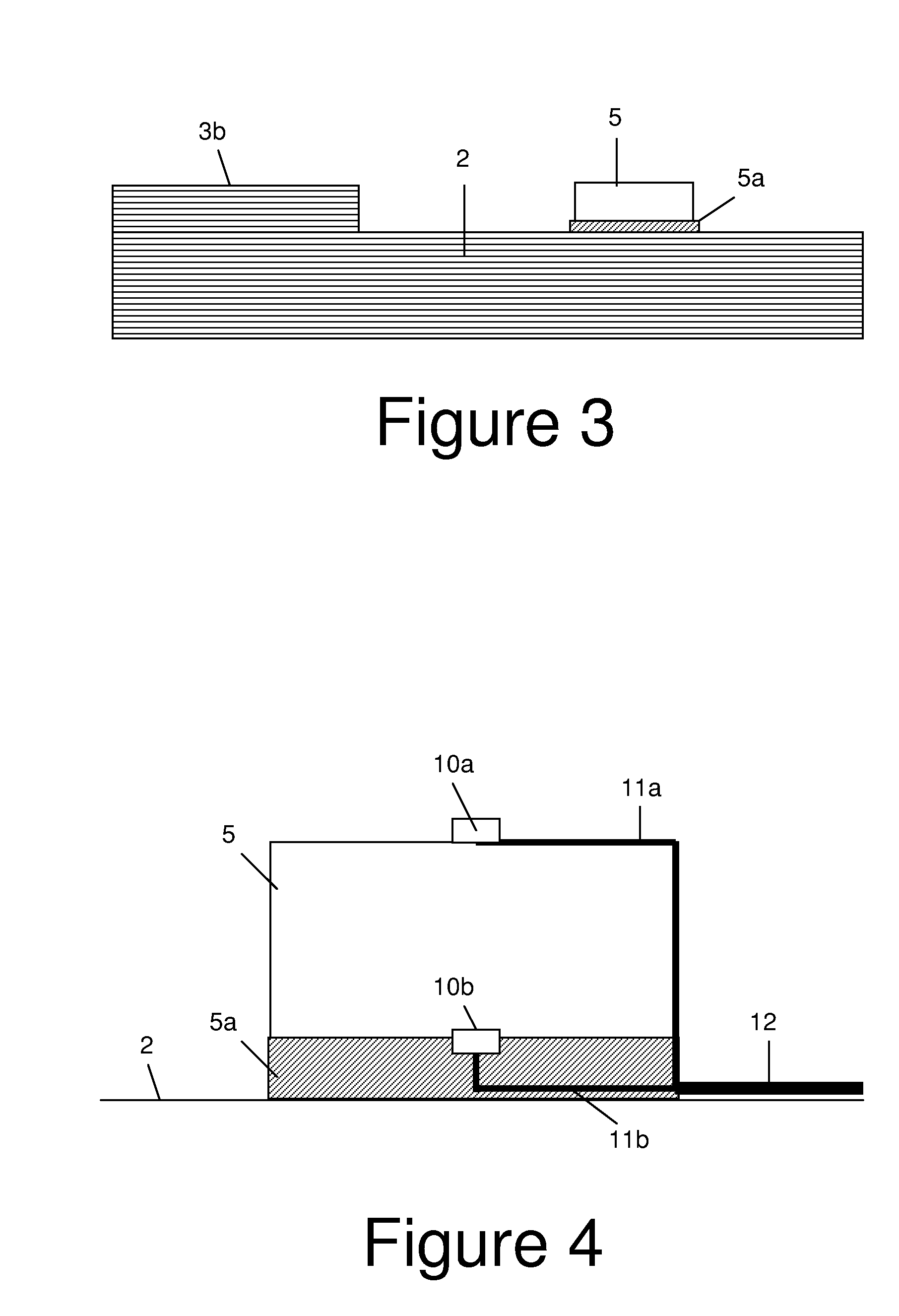Reinforced panel
- Summary
- Abstract
- Description
- Claims
- Application Information
AI Technical Summary
Benefits of technology
Problems solved by technology
Method used
Image
Examples
Embodiment Construction
)
[0030]A portion of a reinforced panel 1 is shown in FIGS. 1 and 2. The panel may form, for example, the skin of an aircraft wing or fuselage. The panel comprises a composite skin 2; a plurality of composite stringers 3,4 co-cured to the skin; and a two-dimensional array of piezoelectric strain actuators 5 positioned between the stringers. In the case of an aircraft wing, the stringers run in a span-wise direction from the root of the wing towards its tip.
[0031]FIG. 1 shows only a small portion of the panel, which extends further in both the horizontal and vertical directions. As shown in FIG. 2, each stringer comprises a web 3a,4a extending from the skin and a pair of flanges 3b,4b which are bonded to the skin 2.
[0032]Each strain actuator 5 is bonded to the skin 1 by an adhesive layer 5a shown in FIGS. 3 and 4. A pair of electrodes 10a and 10b are bonded to the upper and lower faces of the actuator. Each electrode is connected to a respective control line 11a,11b and the control li...
PUM
 Login to View More
Login to View More Abstract
Description
Claims
Application Information
 Login to View More
Login to View More - R&D
- Intellectual Property
- Life Sciences
- Materials
- Tech Scout
- Unparalleled Data Quality
- Higher Quality Content
- 60% Fewer Hallucinations
Browse by: Latest US Patents, China's latest patents, Technical Efficacy Thesaurus, Application Domain, Technology Topic, Popular Technical Reports.
© 2025 PatSnap. All rights reserved.Legal|Privacy policy|Modern Slavery Act Transparency Statement|Sitemap|About US| Contact US: help@patsnap.com



